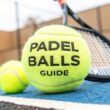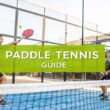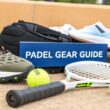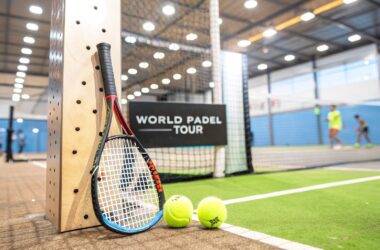The padel racket head is where the magic happens. Seriously. Forget everything else for a second—this is the single most important part of your gear. It’s not just a flat surface you smack the ball with; think of it as the engine room for your power, the control panel for your placement, and the very soul of your playing style.
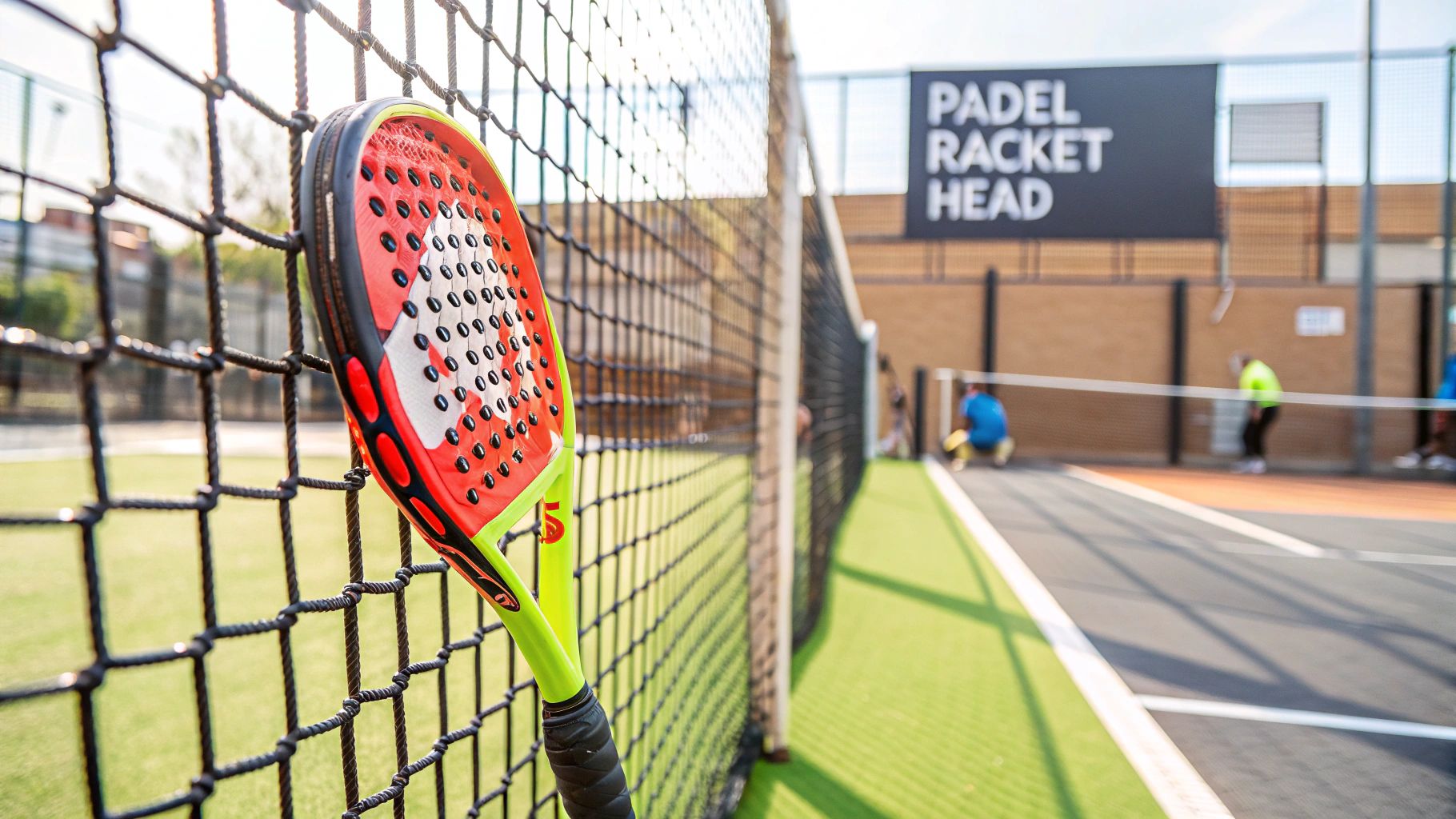
Unlocking Performance Through Your Racket Head
Think of your racket head as the command center for your entire game. Every single decision you make on the court, from a delicate defensive lob to a blistering smash down the line, is carried out by this one piece of equipment. The way it's designed dictates exactly how the ball behaves on impact, making it the number one factor in whether you win or lose a point.
So many players, especially when they're starting out, get caught up in the brand name or how cool a racket looks. But the real performance, the stuff that actually makes a difference, is buried in the head's construction. Getting to know its characteristics is the first step to finding a racket that feels less like a tool and more like an extension of your own arm.
By understanding how the different parts of a racket head work together, you'll give yourself a huge advantage on the court. We’re going to break it all down with clear, practical insights into:
- Head Shapes: How they create the trade-off between raw power and pinpoint control.
- Core Materials: The stuff inside that defines a racket’s feel, comfort, and response.
- Balance Points: The secret behind a racket's agility and hitting power.
Ultimately, knowing this stuff means you can finally stop guessing and start choosing a racket that actually elevates your game. It’s about getting more control, unlocking more power, and gaining that decisive edge that really matters.
Understanding Padel Racket Head Shapes
Picking a padel racket head is a bit like choosing the right tool for a job. You wouldn't use a delicate paintbrush to knock down a wall, and the same idea applies on the court. The shape of your racket’s head is probably the single biggest factor determining how it performs, directly impacting your power, control, and overall feel during a match.
There are three main shapes to know: Round, Diamond, and Teardrop. Each one offers a totally different mix of features. Getting a handle on how they differ is the first real step toward finding a racket that feels like an extension of your arm, not just a clunky piece of gear.
Let's break them down.
The Round Head: For Ultimate Control
Picture a painter's broad brush, the kind made for smooth, consistent strokes and forgiving the occasional slip-up. That's the perfect way to think about a Round padel racket. Its main feature is a big, generous sweet spot right in the middle of the racket face.
This huge sweet spot makes the round shape incredibly forgiving. Even when you don't hit the ball perfectly, the racket helps clean up the shot, sending it back with decent accuracy. This reliable consistency is exactly why round rackets are the go-to recommendation for beginners still honing their technique and for defensive players who live for long rallies and precise shot placement.
- Primary Benefit: Maximum control and a very forgiving feel.
- Balance Point: Usually low, meaning it’s weighted closer to the handle (head-light). This makes it super easy to swing and maneuver.
- Best For: New players and defensive specialists who prioritize placement over pure power.
The Diamond Head: The Power Hitter's Choice
Now, think of a sledgehammer. It’s built for one thing: raw impact. The Diamond padel racket is the on-court version of that, engineered for aggressive players who want to end points with an explosion. Its sweet spot is smaller and sits much higher up on the racket face, further from your hand.
This design creates a head-heavy balance, putting all the weight right where you make contact. When you connect with the ball in that high sweet spot, you get a ridiculously powerful, fast shot—especially on smashes and volleys. But all that power comes with a trade-off. The smaller, less forgiving sweet spot demands sharp technique and perfect timing. Miss it, and you’ll know.
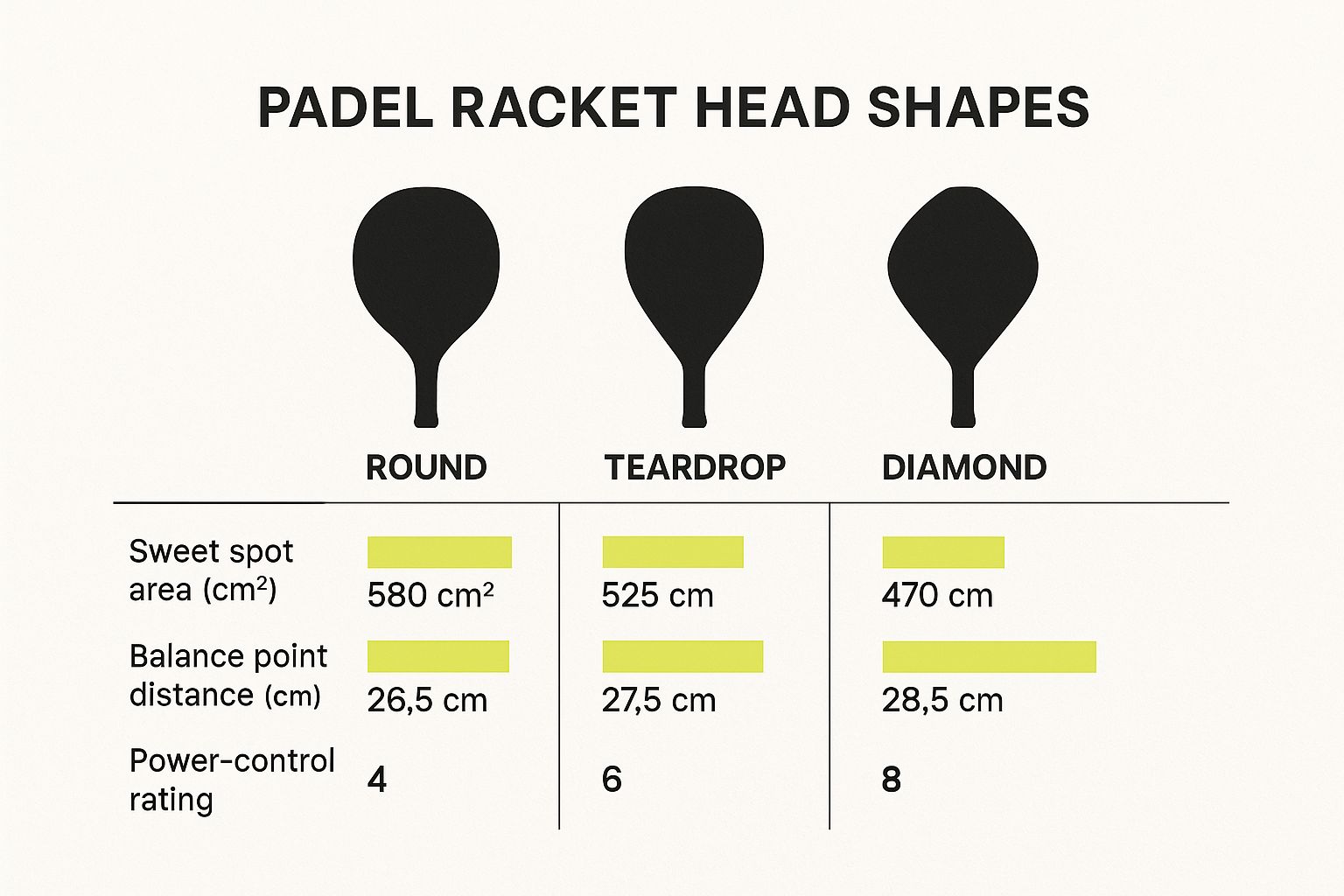
Padel Racket Head Shape at a Glance
To make it even clearer, here’s a quick comparison of how the three shapes stack up against each other.
| Shape | Primary Benefit | Balance Point | Sweet Spot Size | Best For |
|---|---|---|---|---|
| Round | Control & Forgiveness | Low (Head-Light) | Large & Central | Beginners, Defensive Players |
| Diamond | Maximum Power | High (Head-Heavy) | Small & High | Advanced, Aggressive Attackers |
| Teardrop | Versatility | Medium (Even) | Medium & Slightly High | Intermediate to Advanced All-Rounders |
As you can see, there's a clear trade-off between control and power as you move from one shape to the next.
The Teardrop Head: The Versatile All-Rounder
If the round head is a specialist's tool for control and the diamond is for pure power, then the Teardrop shape is your all-purpose multi-tool. It perfectly splits the difference between the other two, delivering a fantastic blend of power and control that clicks with a huge range of intermediate and advanced players.
The sweet spot on a teardrop racket is a bit higher than on a round one, giving you more pop on your shots. At the same time, it’s still larger and more forgiving than what you'd find on a diamond head, so you don’t have to sacrifice all your consistency.
It's this jack-of-all-trades nature that makes the teardrop so popular. It’s the ideal choice for players who have nailed the basics and want to start injecting more aggression into their game without fully committing to a demanding, high-power diamond racket. If you want to learn more about how different racket characteristics match up with skill levels, our guide on the different types of padel rackets is a great next step.
How Materials Define Feel and Performance
While a racket's shape sets the stage, the materials used in its construction are what give it a unique personality. Think of it like this: two guitars can have the exact same shape, but if one is made of maple and the other mahogany, they’ll produce entirely different sounds. The same principle applies here. The core and face materials dictate everything from comfort and vibration to power and precision.
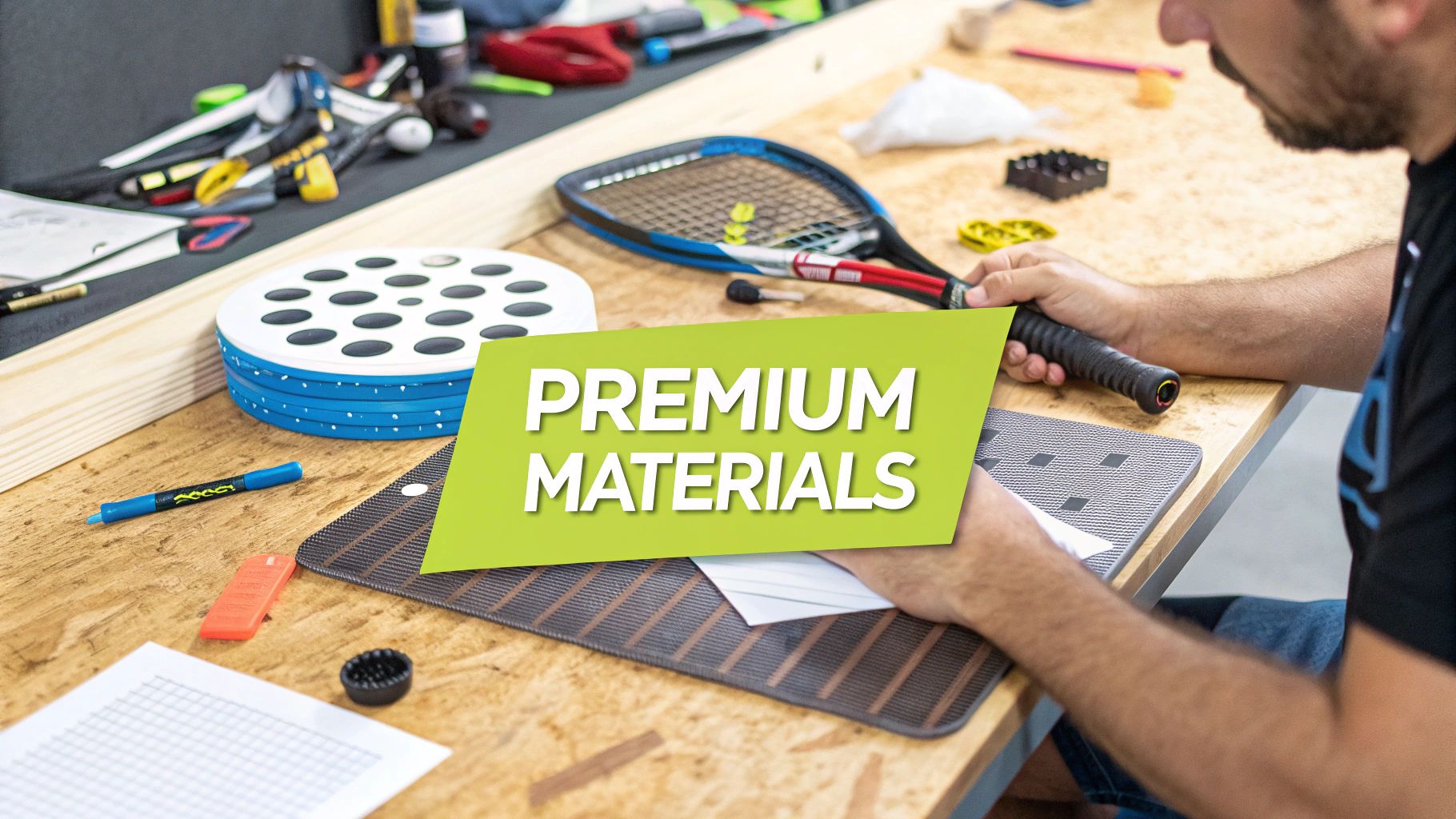
A padel racket is essentially a story of two key components: the internal core and the external face. Understanding how these layers work together is crucial to finding a racket that doesn't just suit your style, but also feels right in your hand.
Let's peel back the layers and take a look inside.
The Core: Your Racket's Engine
The core of the racket is its engine—the foam center that absorbs impact and fires back. It's almost always made from some type of EVA (Ethylene Vinyl Acetate) foam, but not all EVA is created equal. The density of this foam is what really defines how the racket feels when you make contact.
Soft EVA Foam
Imagine pressing your hand into a memory foam pillow. It cushions the impact, contours to your shape, and then gently springs back. Soft EVA foam works in a similar way, creating a comfortable, plush feel when the ball hits the strings.
- Vibration Dampening: It’s brilliant at absorbing vibrations, which makes it much easier on the arm and a fantastic choice for players prone to tennis elbow.
- Ball Output: This softer core provides a "trampoline effect," helping propel the ball with less effort from you. This is a huge help on slower, defensive shots.
Hard EVA Foam
On the other hand, hard EVA foam is more like a springy, firm mattress. It offers less cushioning and gives you a much more direct, solid response. This compact core doesn't absorb as much of the shot's energy, instead transferring more of it straight back into the ball.
A firmer core rewards powerful strokes with exceptional control and precision. Players who generate their own pace love this direct feedback, as it allows them to place the ball with pinpoint accuracy during fast-paced, aggressive rallies.
This responsive feel is exactly why advanced players often gravitate towards harder EVA cores. They can harness its raw power and control for devastating smashes and crisp volleys.
The Face: Your Point of Contact
The face of the racket is the surface that actually meets the ball. The material used here determines the stiffness, durability, and the final touch you feel on every single shot. The two most common materials you'll see are fiberglass and carbon fiber.
Fiberglass: The Forgiving Choice
Fiberglass is a more flexible and budget-friendly material. Its natural elasticity gives a softer touch and a larger sweet spot, making it incredibly forgiving on off-center hits. This makes it the perfect material for beginner rackets, as it helps new players build confidence and control without demanding flawless technique.
Carbon Fiber: The Performance Standard
Carbon fiber is a different beast altogether—it's significantly stiffer, lighter, and more durable than fiberglass. This rigidity means less of the racket face flexes on impact, resulting in a direct transfer of energy for explosive power. Advanced players prefer carbon fiber for its crisp feel and the high level of precision it offers.
This global demand, especially from strong markets in Europe and Latin America, is constantly pushing innovation in composite materials for racket faces. Manufacturers are always experimenting to improve durability and performance, though the higher price tags for premium materials can be a barrier in some emerging regions. This evolution of materials is a key reason for the sport’s growing popularity and professionalization. You can discover more insights into the global padel market and its growth drivers on cognitivemarketresearch.com.
Finding the Right Balance for Your Style
Think of your padel racket's balance like a seesaw. Where the weight sits completely changes how it feels and performs in your hand.
A Head-Heavy balance is like putting all the weight on one end of that seesaw. It gives your swing incredible momentum, turning your racket into a hammer. This is fantastic for powerful overhead smashes and drives, where you want to feel that explosive force behind the ball.
Flip it around, and you get a Head-Light balance, where the weight is shifted down towards the handle. This makes the racket feel incredibly nimble and quick to react. It's a massive advantage at the net for fast volleys or when you need to block a powerful shot with lightning-fast reflexes. You can redirect the ball's pace almost instantly.
Then there's the happy medium: an Even Balance. This setup spreads the weight more uniformly, giving you a taste of both worlds. It offers a solid blend of power and agility, making it a super versatile tool. It’s no surprise that many intermediate players love this middle-ground feel.
- Head-Heavy is the go-to for aggressive players hunting for a power boost.
- Head-Light is a lifesaver for defensive specialists who rely on speedy reactions.
- Even Balance is perfect for all-rounders who need flexible performance.
How Head Shapes Affect Balance
The shape of your racket head is no accident—it's engineered to influence where that balance point naturally falls.
Diamond shapes, with their wider, heavier tops, are almost always head-heavy. This design is all about maximizing leverage and generating raw power at the point of impact.
On the other end of the spectrum, Round heads tend to be head-light. With the sweet spot located closer to your hand, they feel wonderfully easy to swing. Control-focused players love how effortless they feel, like swapping a sledgehammer for a precision mallet.
Teardrop shapes split the difference, creating a near-even balance. Their sweet spot sits in the middle of the racket face, delivering a satisfying mix of control and power. It's the ultimate hybrid, blending the best of both worlds.
“Balance isn’t just a number on a label. It defines how your racket responds under pressure.”
| Shape | Balance Type | Best For |
|---|---|---|
| Diamond | Head-Heavy | Power hitters and smashes |
| Round | Head-Light | Defensive volleys and touch |
| Teardrop | Even Balance | Versatile intermediate play |
Choosing Based on Balance Preference
Just knowing the shapes isn't enough; the right balance comes down to you. Your playing style and even your physical strength should guide your choice. For instance, if you're prone to wrist strain, a lighter, head-light model can take a lot of that pressure off.
If you're a dynamic player who loves to end points with a bang, a head-heavy racket will add serious velocity to your shots. Just be warned: you need consistent technique to handle the extra weight, otherwise you might find yourself mis-hitting the ball.
To see how these concepts play out in real-world models, check out our guide on the best padel rackets. It breaks down top-rated options by style and balance preference.
Testing Your Balance in Play
The best way to find your match is to feel it on the court. Grab a few different rackets and mimic quick exchanges at the net. Pay close attention to how the racket moves. Does the head feel like it's lagging behind your swing? That's a huge tell.
This simple drill can reveal your ideal balance almost immediately.
- If your defensive volleys feel sluggish and late, try a racket with a lighter head.
- If your smashes feel a bit weak and lack that finishing pop, experiment with a head-heavy diamond.
Finding the right balance is like tuning an instrument. If it's too heavy or too light, the harmony is lost. You want a racket that feels perfectly in tune with your body and style of play.
When you get this alignment of shape, material, and balance just right, your game will feel transformed. The racket stops feeling like a separate tool and truly becomes an extension of your arm. Your shots will start to flow naturally and effortlessly, and that's when the real fun begins.
How to Choose Your Ideal Padel Racket Head
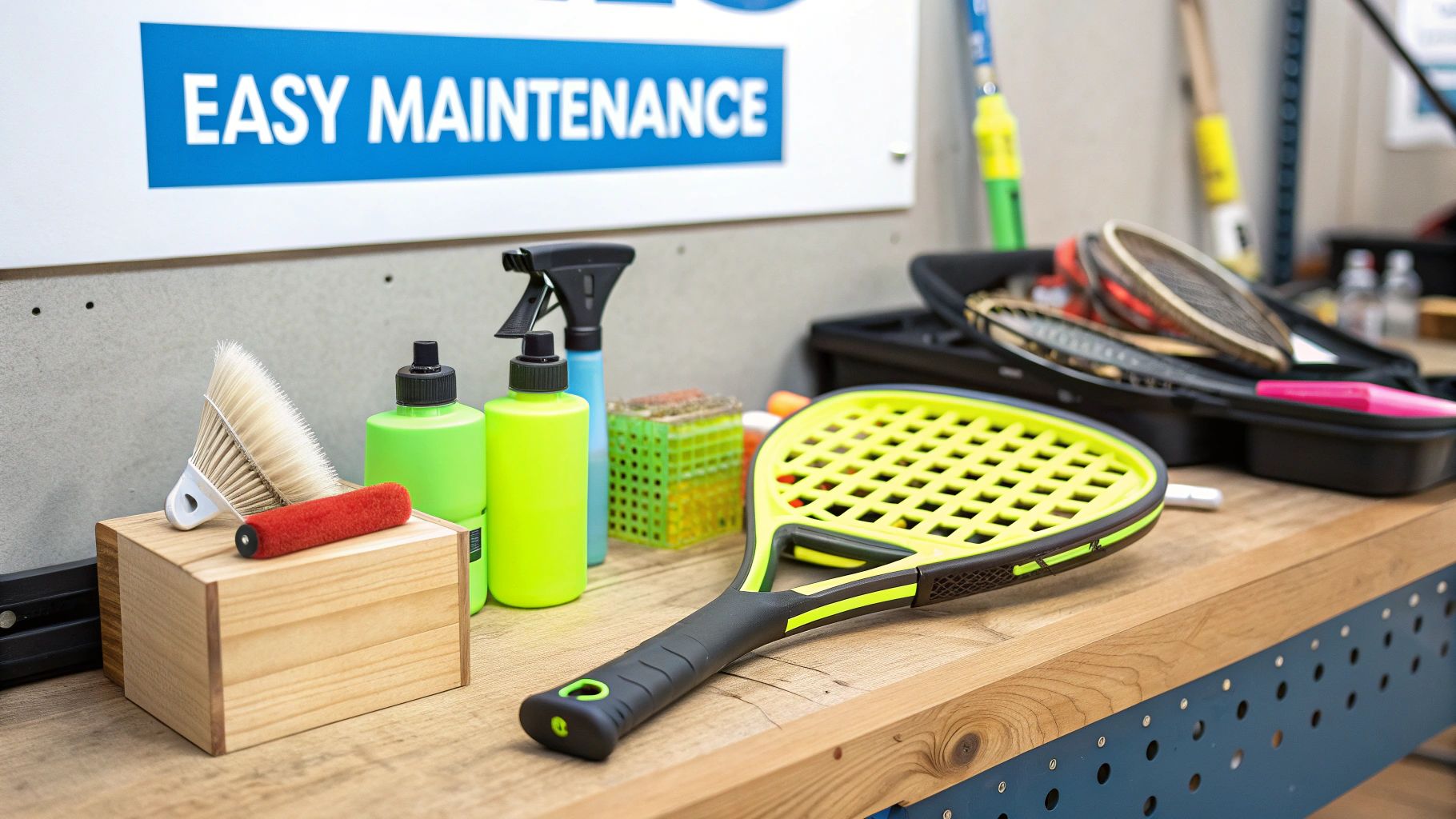
Alright, you've got the theory down. Now, let's turn all that knowledge into a smart decision on the court. Picking the right padel racket head isn't rocket science; it really just boils down to asking yourself a few honest questions about your game.
Get these right, and you'll quickly filter out the noise, leading you straight to a racket that feels less like a piece of equipment and more like an extension of your arm. Think of this as the bridge between knowing the specs and actually finding the racket that will click with your playstyle.
What Is Your Skill Level?
First things first: be real with yourself about where you are on your padel journey. This is easily the most important piece of the puzzle when choosing a head shape.
-
Beginner Players: Your number one goal is just getting the ball over the net. A Round head is your new best friend. Its huge, forgiving sweet spot helps you build consistency and confidence, letting you learn the ropes without punishing you for every slightly off-center hit.
-
Intermediate Players: You've got the basics handled and you’re starting to hunt for ways to add more punch to your game. The Teardrop shape is the perfect middle ground, offering a fantastic blend of power and control. It’s built to support a developing game, giving you more authority on your shots without sacrificing placement.
-
Advanced Players: At this level, you create your own power and demand a racket that rewards absolute precision. A Diamond head gives you that explosive pop needed to end points with authority. Its smaller, higher sweet spot requires solid technique, but the payoff is massive power on smashes and volleys.
What Is Your Playing Style?
Next up, think about how you naturally play. Are you the patient, grinding defender who wins long rallies, or are you the aggressive attacker always looking for a quick finish?
Defensive players live and die by control and quick hands. A lighter, head-light racket with a Round shape is ideal for fast reactions at the net and pinpoint accuracy on lobs and defensive digs. On the flip side, an aggressive player needs that extra weight from a head-heavy Diamond racket to make their smashes and viboras truly devastating.
Your racket head should complement your strengths, not fight against them. The right choice makes your preferred style of play feel more natural and effective.
Are You Prone to Injuries?
Finally, and this is a big one, think about your body. Padel can be demanding on the arm, especially the elbow and shoulder. If you've ever dealt with tennis elbow or just general soreness after playing, your racket choice becomes a critical tool for injury prevention.
Rackets made with softer EVA foam and more flexible fiberglass faces do a much better job of soaking up vibrations, which takes a lot of stress off your joints. A head-light balance also makes a racket feel easier to swing, reducing strain over a long match.
Technology in the padel racket head is also a huge factor now. Brands are constantly innovating with new composite structures and core foams specifically to improve balance and absorb impact, which directly helps with player fatigue and comfort.
By weighing these three things—your skill, your style, and your body’s needs—you can walk into a shop and choose a racket with confidence. To see how these concepts apply to actual models, check out our other articles for the latest padel racket news and reviews.
Still Have Questions About Padel Racket Heads?
After covering shapes, materials, and balance, a few common questions always seem to come up. Let's tackle some of the most frequent ones so you can feel completely confident when you pick your next racket.
Does a Heavier Racket Automatically Mean More Power?
Not really. It’s a common misconception. While a heavier racket has more mass and can pack a serious punch, that power is useless if you can't swing it properly.
Imagine trying to drive a nail with a sledgehammer instead of a regular hammer. The sledgehammer has way more potential force, but if you can't control it, your swing will be slow, awkward, and probably miss the mark. The same logic applies here. For a lot of players, a lighter racket they can whip through the air quickly will actually generate more effective power on the court.
The bottom line: Power comes from a mix of racket mass and your swing speed. A heavier head only helps if you can handle it without sacrificing your speed and control.
How Often Should I Replace My Padel Racket?
This really depends on how often you're out there playing. For a casual player hitting the court 1-2 times a week, you should probably think about getting a new racket every 12 to 18 months. The EVA foam inside the head just breaks down over time, losing its pop and leaving the racket feeling "dead."
If you're a more serious player, training and competing several times a week, that timeline shrinks. You might need a fresh racket every 6 to 8 months to maintain peak performance. Of course, if you see any obvious cracks in the frame or face, that’s your sign—it’s time for a new one, no questions asked.
Does the Racket's Surface Texture Actually Help with Spin?
Oh, absolutely. The texture on the face of a padel racket head is a game-changer for generating spin. You'll see modern rackets with everything from a gritty, sandpaper-like finish to raised 3D patterns.
This rough surface literally grabs the ball for an extra split second on impact. That added friction is what lets you put some serious rotation on the ball, making shots like the vibora or a slicing bandeja absolutely vicious. While you can still generate spin with a smooth-faced racket and good technique, a textured one just amplifies the effect and gives you a huge advantage.
Ready to find the perfect racket that matches your skill and style? At Padel Rumors, we provide in-depth guides, reviews, and the latest news to help you dominate the court. Explore our resources today.


